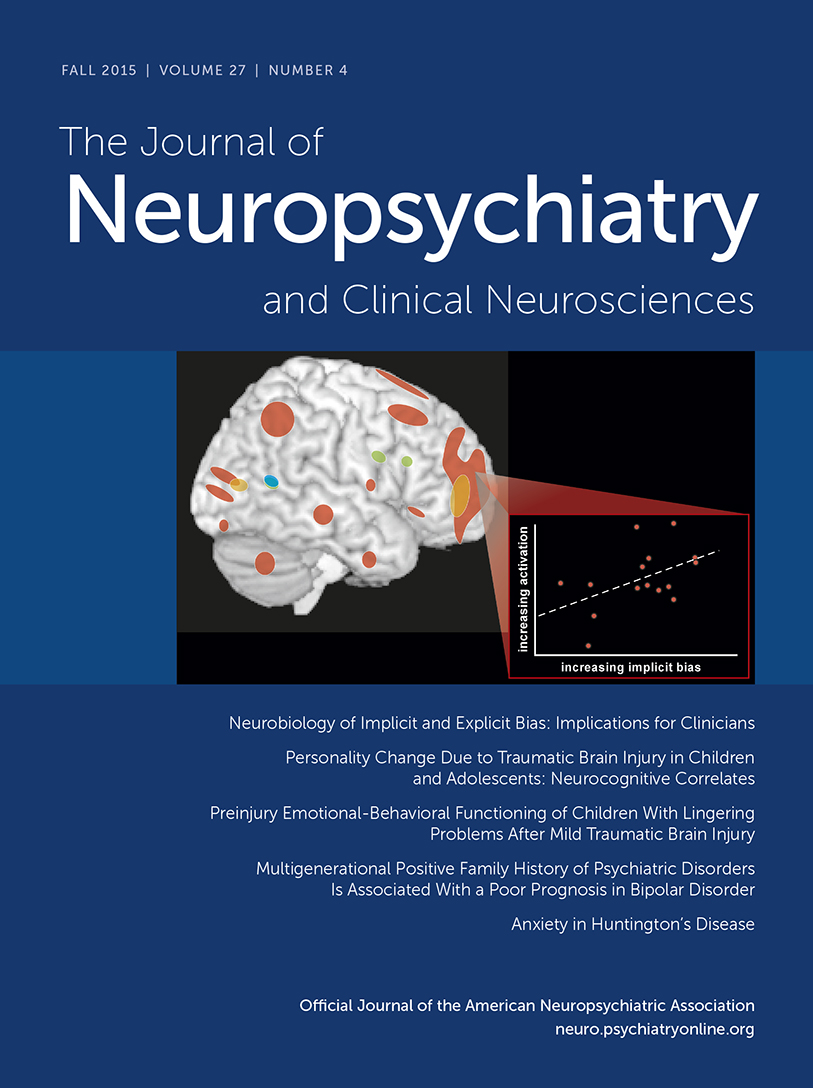Pathological Laughter and Crying and Psychiatric Comorbidity After Traumatic Brain Injury
Abstract
There are limited data regarding the incidence of pathological laughter and crying (PLC) after traumatic brain injury (TBI). This study aimed to identify the occurrence of PLC in the first year after TBI and to determine whether there is a relationship between PLC and other clinical features or demographics. Subjects who sustained a first-time TBI were recruited from acute trauma units and were assessed at 3, 6, and 12 months after TBI. Rates of PLC at 3, 6, and 12 months after TBI were 21.4%, 17.5%, and 15.5%, respectively. Patients with PLC had higher percentages of psychiatric diagnoses, including personality changes, depressive disorders, and mood disorders secondary to a general medical condition, as well as higher rates of posttraumatic stress disorder. Univariate logistic and linear regression analyses indicated a significant association between PLC and scores on the Clinical Anxiety Scale 3 months after TBI and on the Hamilton Depression Rating Scale 12 months after TBI. Individuals who have PLC during the first year after TBI are more likely to have any psychiatric diagnosis as well as higher rates of mood and anxiety symptoms. In addition, PLC in the early TBI period may serve as a predictor of depression and anxiety symptoms at 12 months after TBI.



